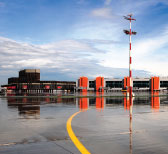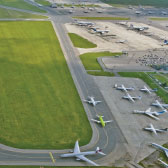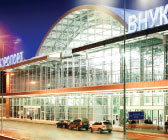
According to a Sheremetyevo spokesperson: “During the period of smog, Sheremetyevo served around 40 flights, which could not land at either Domodedovo or Vnukovo.”
July was the hottest month in Moscow in 130 years of recorded history and the fires raging in the neighbouring regions of Vladimir and Ryazan saw a blanket of acrid, dense smog blown into the city by southeast winds. The worst days were 6 and 7 August, when the carbon monoxide concentration in the air exceeded the maximum permissible level by six to seven times. The three Moscow airports were impacted to differing extents.
Operations at Moscow-Domodedovo were significantly affected due to the airport’s proximity to the most severe fires and the airport was in regular contact with EMERCOM (The Russian Ministry of Emergency Situations). “Ground visibility was constantly changing from 250m to 5,000m depending on the day. For instance, on 6 August 102 fire points were registered in the Moscow region in an area of 549,513 hectares, when ground visibility at the airport was only 650m in the morning, changing to 1,300m in the evening,” explained spokesperson Elena Galanova. “Moscow Domodedovo airport has been certified to ICAO CAT III and is considered an all-weather airport, thus no restrictions for landing and departures were imposed.

Operations at Moscow Domodedovo were more severely affected by the forest and peat fires than the other airports in the Moscow Aviation Hub due to the airport's proximity to the most severe fires.
“Considering that all airports in the Moscow Aviation Hub were affected by the smog, they accepted aircraft from the other Moscow airports by rotation when conditions at one of them were a little better than at the others. Or aircraft were diverted to Nizhniy Novgorod, Voronezh or Kazan. But I would like to emphasise that Domodedovo didn’t stop its operations: crews took a decision regarding landing and take-off independently.”
Moscow-Vnukovo spokesperson Andrey Sokolov said “Vnukovo airport faced its most difficult situation on 7 August, when the smoke was strongest in the Moscow region. During the period of the forest fires, a total of around 50 flights destined for Vnukovo landed at other airports, such as St Petersburg, Nizhny Novgorod and Voronezh. I must say that the smoke and heat strongly affected the inhabitants of Moscow – to breathe in the city was really difficult.”

During the period of the forest fires, a total of around 50 flights destined for Vnukovo landed at other airports, such as St Petersburg, Nizhny Novgorod and Voronezh.
Meanwhile, Moscow-Sheremetyevo was luckier and suffered minimal disruption despite the smog. A Sheremetyevo spokesperson said “The airport functioned according to the schedule – any traffic troubles were slight. We provided a quality service and ultimate safety for our passengers. During the period of smog, Sheremetyevo acted as back-up for around 40 flights, which could not land at either Domodedovo or Vnukovo. Only four flights were directed to spare aerodromes. In order to ensure fire safety, airport staff carried out all efforts required, including being on-duty 24 hours per day. Our partners were fully instructed and highly equipped as well.”







